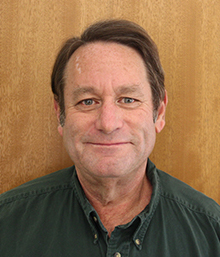Commuters into the city have plenty of time to think and study the pavement when traffic is crawling along Interstate 29 during rush hour. I’ve been noticing cracks in the pavement, lots of them. Considering tons upon tons of trucks, cars and motorcycles constantly placing weight and torque upon asphalt and rock, stressed roads are not surprising. Throw in extreme cold and heat, sometimes both in the same week, and it is surprising roads hold together at all.
Our highways are a engineering wonder, but they suddenly don’t seem modern.
Platte County residents have generally considered our northern berg to be apart from Kansas City’s crowds and the grittiness of city living. But we now have choked commuter routes that are part of city living.
Growth has hit a tipping point where clogged roads are the norm.
This is the first summer I’ve felt like that. I’ve been driving in and out of the old part of KC south of the river for decades and making a job commute to the Country Club Plaza for almost five years. This summer feels different on the highways.
Missouri highway officials have been saying for several years now that the state lags way behind needs when it comes to highway funding. We’re behind on bridge maintenance, reworking interchanges and adding lanes to freeways. But nobody likes more taxes to pay for them.
Voters have said no a couple of times to funding proposals. I’m pretty sympathetic to no more taxes, especially when a tax is tacked onto fuel, a major cash drain for a commuter.
However, I’ve begun to wonder if we’ve made choices that will make life less pleasant.
The Northland once enjoyed roads outpacing growth. Barry Road used to be a narrow source of clogging, but it became four lanes in Platte County, and Highway 152 was opened as a divided, four-lane freeway to the north. Interstate 435 was built through the open countryside. U.S. 169 along the county’s east side became four lanes with interchanges.
We all cruised the highways pretty carefree. Now, carefree is at risk.
A group of highway, business and civic leaders stood near the Broadway Bridge last week and discussed a new study that points out road ills. They were pushing in part for action in the state legislature that would add 2 cents or 1.5 cents to the state’s gas tax. They consider it a temporary fix, but one that would prevent Missouri from losing hundreds of millions of dollars in federal highway funds because the state couldn’t afford the match.
According to The Kansas City Star, leaders used congestion on bridge crossings across the Missouri River as one example of trouble.
The study cited during their pitch is available at www.tripnet.org. It mentions that metro motorists spend 27 hours extra on the road each year due to congestion. I’d say that estimate is way low for many commuters from Platte County.
I-29 and it’s merged stretch with Interstate 35 is slow mornings and evenings south of NW 64th Street.
Now that construction is closing lanes at all the interstate’s bridges over crossroads, traffic creeps. In recent weeks I’ve been on U.S. 169 in the evenings and found it for the first time in my memory moving very slowly south of Barry Road. Even the Interstate 435 Bridge over the Missouri River and leading to Platte County has construction barrels out.
Welcome to a slow summer on the road.
Safety is an even bigger concern. Crowded roads increase the chances for wrecks. Those northbound I-29 entrance ramps off Vivion Road and North Oak Trafficway are nasty interchanges. Plus with the exception of buses, which have limited routes in the Northland, mass transit is not available.
The cracked pavement is beginning to seem trivial.
The biggest problem, one soon to get worse, is lack of updated interchanges and adding lanes to major routes. Meanwhile, highway woes mean less care and tending for the back road blacktops many of us also use.
I suspect a gas tax increase will make it through the state legislature in some form. There’s money to be made from highway construction. That means business that backs election campaigns will twist arms.
And highway need facts are becoming more obvious.
But when the high school seniors graduating this spring finish college and begin driving to work every day, they may wonder why their elders didn’t do better planning and building of highway infrastructure.
We’re already behind on the type of construction that takes decades to execute.
Bill Graham, who lives in the Platte City area with his family, may be reached by e-mail at editor@plattecountycitizen.com.


